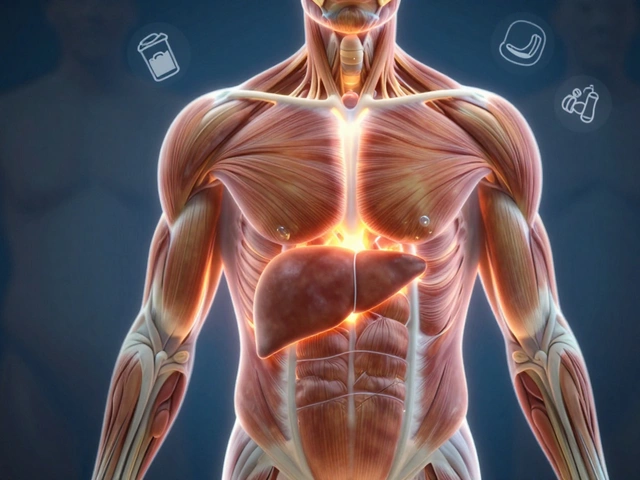So you want to lose 20 pounds in a month—sounds bold, right? The first thing you should know: most people have tried some crash diet at least once, hoping for quick results. But does dropping that much weight in just four weeks actually work, or is there some catch that nobody talks about?
If you Google it, you'll see insane promises—lose 20 pounds by cutting carbs, sweating through two workouts a day, downing lemon water, or living on soup. But here’s the thing: your body doesn’t just burn fat when you slash calories hard. You also lose water and muscle, and that can mess with your metabolism. Clinics that promise huge drops fast? They might use strict meal plans, prescription meds, or injections, but even doctors get real about the risks. You could feel tired, cranky, or even get health problems if you go too extreme.
Still curious what’s really safe, and what’s just a flashy sales pitch? Stick around. We’ll break down what’s possible, how clinics try to help (or sometimes overpromise), what happens inside your body during rapid loss, and smart tips for losing fat without flipping your whole life upside down.
- Is 20 Pounds in a Month Possible?
- How Weight Loss Clinics Approach Fast Results
- What Happens to Your Body During Rapid Weight Loss?
- Tips for Safe and Lasting Fat Loss
Is 20 Pounds in a Month Possible?
If you’ve ever wondered, “Can I lose 20 pounds in a month?”—you’re not the only one. This goal pops up a lot, especially right before holidays, weddings, or reunions. But here’s the blunt truth: dropping 20 pounds in just four weeks isn’t typical and, for most people, not a healthy target.
The average safe rate of weight loss is about 1-2 pounds per week, according to the Centers for Disease Control and Prevention (CDC). That’s roughly 4-8 pounds a month. Losing more than that means you’re probably losing water weight, muscle, or, worse, risking your health. Fast drops on the scale might look cool, but the weight tends to come right back—and you can feel pretty lousy in the process.
Take a look at what science says about fast weight loss:
| Method | Typical 4-Week Weight Loss | Risks |
|---|---|---|
| Standard Diet + Exercise | 4–8 lbs | Low |
| Very-Low-Calorie Diet (under 800 kcal/day) | 10–20 lbs (mostly water & muscle) | Gallstones, fatigue, nutrient problems |
| Prescription Weight Loss Meds | 5–10 lbs | Side effects, not for everyone |
If you’re starting out with a lot of weight to lose, you might see bigger losses at first, mostly water. But after the first week or two, it gets slower—and that’s actually healthier for your body. Crash diets and detoxes may sound tempting, but studies show people who lose weight slowly are more likely to keep it off.
So, is it physically possible for some folks to drop 20 pounds in a month? Maybe, especially if you’re working with a doctor or have a lot to lose. But for most people, trying for this goal just means headaches, hunger, and regaining the weight later. If you want results that stick, aim for steady progress rather than big, risky swings on the scale.
How Weight Loss Clinics Approach Fast Results
Weight loss clinics know that "lose 20 pounds fast" grabs your attention. They use science, strict supervision, and sometimes medical tools to speed things up. If you walk into one of these clinics and say you want to lose 20 pounds in a month, here’s basically what usually happens.
The first thing they’ll do is a check-up—blood work, weight, body fat measurement, blood pressure, all of it. They’re looking for any health issues because going aggressive with weight loss isn’t safe for everyone.
- lose 20 pounds plans from clinics usually start with a super-low-calorie diet, sometimes as low as 800 to 1,200 calories per day.
- You’ll get meal replacements—shakes, bars, soups—because tracking “real” food is tough on strict plans.
- To avoid muscle loss, they’ll focus on enough protein (like shakes or lean meat).
- Some clinics use prescription meds such as phentermine or GLP-1 agonists (like semaglutide or tirzepatide) if you qualify. These cut your hunger.
- You’ll meet with nurses or counselors every week to get weighed, adjust the plan, and keep you motivated.
- Expect strict rules—no cheat days, little to no alcohol, and a lot of water.
Some clinics even offer vitamin B12 injections or “lipotropic shots” (a mix of vitamins and amino acids) that they claim can boost metabolism, but the real proof behind these is pretty weak.
| Method | Purpose | Notes |
|---|---|---|
| Very Low-Calorie Diet (VLCD) | Quick calorie drop | 800-1,200 calories/day; doctor monitored |
| Prescription Appetite Suppressants | Cut hunger | Phentermine, semaglutide, tirzepatide |
| Meal Replacements | Control food intake | Shakes, bars, controlled meals |
| B12/Lipotropic Injections | "Boost" metabolism | Evidence is weak |
| Frequent Check-ins | Monitor progress | Weekly or bi-weekly visits |
Here’s a reality check: even clinics say losing 20 pounds in a month is usually water and some muscle at first, not just fat. The average safe loss is 1-2 pounds per week, according to doctors, so a 20 pound drop is very extreme, and most people can’t keep it off long-term without major lifestyle changes afterwards.
If you’re thinking about going to one of these clinics, ask exactly how they’ll help you lose weight, what support you get after, and how they’ll make sure you stay healthy while trying to hit big numbers fast.

What Happens to Your Body During Rapid Weight Loss?
Losing weight fast doesn’t just shrink the number on the scale. When you go for something as aggressive as dropping 20 pounds in a month, you set off some real changes inside your body.
First off, a big chunk of quick weight loss in the first week is usually water, not fat. Eat fewer carbs, and your body dumps stored water that comes along with the carbs. That’s why you see dramatic drops at first, especially if you follow a low-carb plan. It’s motivating, but it can be deceiving—what you really want to lose is fat, not just water weight.
If you push too hard with low calories or crazy workouts, your body also starts using muscle for energy, not just fat. That’s bad news, since losing muscle slows down your metabolism—so over time you actually burn fewer calories, even at rest. It’s also the reason why some folks hit a weight loss “wall” after an initial drop.
Rapid weight loss messes with hormones too. Leptin (which tells you you’re full) can drop, while ghrelin (which makes you hungry) goes up. You get hungrier, your cravings spike, and your energy tanks. That’s why some people end up binge eating or regaining weight fast when they go back to normal habits.
- If you cut calories too much, you’re at higher risk for things like gallstones, hair loss, or even electrolyte problems—which can make you feel weak, dizzy, or worse.
- Your mood and focus can take a hit, since your brain loves carbs for quick energy. Cutting too much, too fast can leave you feeling foggy or cranky.
- Crash plans zap your immune system, so you get sick more easily.
Now, clinics often advertise big numbers like lose 20 pounds in a month, but even supervised programs rarely recommend losing more than 2-3 pounds per week for long-term health. If you’re doing any kind of rapid plan, make sure you’re protecting your body, not just shrinking your waist. Long story short: if you go too fast, your body fights back—and that makes results much harder to keep.
Tips for Safe and Lasting Fat Loss
If your end goal is to actually keep the weight off (instead of bouncing up and down every month), you’ll want to think long-term. Losing weight too fast messes with your metabolism and makes it way easier to regain pounds, according to Mayo Clinic. The trick is solid habits that stick—not wild diets that make you crazy and hungry all the time.
- Lose 20 pounds the smart way: stick to dropping 1-2 pounds per week. That might not sound dramatic, but it keeps your body and mind sane. Most medical sources, including the CDC, back this safe pace.
- Eat more filling foods—protein, veggies, and fiber. Swapping white bread for eggs or Greek yogurt in the morning really helps with cravings and makes you fuller for longer.
- Track what you eat. Not forever, but for a couple of weeks. On apps like MyFitnessPal, you can be shocked by how quickly snacks and soda add up without realizing.
- Don’t skip all carbs or fat. Healthy fats (like olive oil or avocado) and slow carbs (oats, sweet potato) actually help keep energy steady, so you won’t want to raid the pantry at 10 p.m.
- Move more—any movement counts. You don’t need a fancy gym plan. Walking 30 minutes after dinner or lifting a set of dumbbells at home knocks out a lot of calories.
- Get sleep. This sounds random, but if you’re tired, hormones that make you hungry go up. Aim for 7+ hours, or appetite control gets way harder.
Weight loss clinics often toss around solutions like meal plans, medicine, or appetite suppressants. Some people really do benefit with doctor guidance, especially if they have health issues or hit a plateau. But remember, even clinics say you need to stick with the basics: eat less junk, move more, and find a routine that doesn’t make you miserable.
We’re all looking for shortcuts, but nothing beats slow and steady for lasting change. Small tweaks today (like swapping sugary drinks for water, or picking chicken over fried sides at lunch) add up way faster than starvation or crazy “detoxes.” You don’t have to do everything at once—just pick one good habit and actually stick with it this week.










